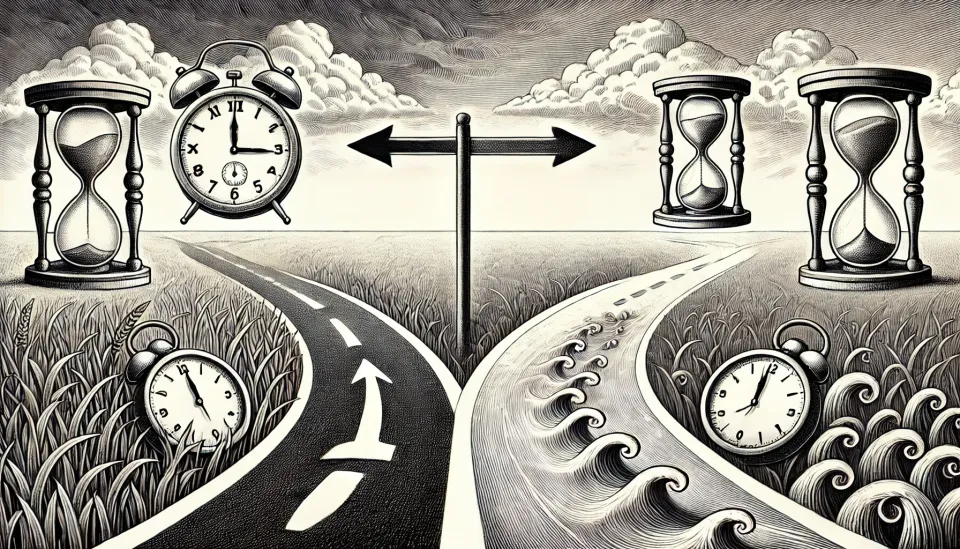FL #92: The Power of Slow: Lessons from OpenAI's o1 and the Early Cruise Industry

If you want to experience the post a different way, I used the impressive NotebookLM by Google to turn it into a podcast. All I did was feed it the text below, everything else was generated by the AI (pretty good and it appears to actually build on some of my ideas). If you haven’t played with this yet, I strongly urge you to listen to the clip.
Now, on to the post...
Many instances benefit from the "move fast break things," approach, and just as many can benefit from slowing down. "Going slow to go far" may sound counterintuitive, yet there are stories that show that deliberate deceleration can offer exceptional rewards. In this issue, I explore two examples—OpenAI’s recent o1 model launch and the early cruise industry—where slowing down led to outsized gains, transforming industries and setting new benchmarks for quality.
Example 1 - OpenAI's o1 Model
OpenAI has recently introduced the o1 model, which prioritizes depth of reasoning over speed of response. Despite taking 30 times longer than its predecessor, GPT-4o, the o1 model demonstrates that the right type of slowdown can elevate performance. The trade-off between speed and enhanced thinking capabilities has several key benefits:
- Enhanced Critical Thinking: By allowing the model more time to deliberate, o1 excels in tackling complex, multi-step reasoning problems. It performs at a PhD level on challenging benchmarks across physics, chemistry, and biology, and has achieved 83% success rate on International Mathematics Olympiad qualifying problems, compared to just 13% for GPT-4o. This extended “thinking time” enables the model to engage in deep analysis that’s otherwise unattainable at higher speeds.
- Transparent Problem-Solving: o1’s slower processing time isn’t just about better results; it also makes the model’s thought process more transparent, providing users with insight into its problem-solving approaches. I've found myself looking at the reasoning just as much as the output.
- Simplified Prompting: Since o1 is capable of more complex reasoning, it reduces the need for intricate chain-of-thought prompts. This capability not only saves time in designing effective prompts but also makes advanced AI capabilities more accessible to non-expert users. The simplification of the user experience, in turn, lowers the barrier to tapping into the power of cutting-edge AI.
Slowing down in this situation didn't mean settling for less, but it allowed for a significant improvement in what the model could accomplish. By prioritizing depth of reasoning over speed, OpenAI provided valuable access to insights that are crucial for solving some of the most difficult problems. This trade-off was not only worthwhile but also transformative.
Example 2 - The Early Cruise Industry
In the late 19th and early 20th centuries, the world seemed to be shrinking rapidly. Steam-powered ships and the dawn of air travel meant that people could get from point A to B faster than ever before. But amidst this frenzy for speed, the emerging cruise industry offered something different—the luxury of slowness.
Against the backdrop of ever-faster travel, early cruise lines presented a unique proposition: why rush to your destination when you could savor the journey itself? The cruise industry chose to prioritize providing an immersive and luxurious experience over speed. Rather than focusing solely on reaching destinations quickly, early cruise lines catered to affluent leisure travelers who valued the journey itself and sought a social experience.
- The Right Time: The rise of the cruise industry coincided with a period when technological advancements were making the world more connected than ever. The SS Savannah crossed the Atlantic in 1819, marking the beginning of steam-powered ocean travel. The opening of the Suez Canal in 1869 significantly reduced travel times between Europe and Asia, and by 1903, the Wright brothers' first powered flight set the foundation for rapid air travel. Yet, amid all these advancements, cruise companies recognized that some travelers were willing to trade speed for luxury, comfort, and the joy of the journey.
- Unique Offering: Early cruise ships were luxurious floating palaces, designed for those who had the time and means to embrace a slower, more lavish journey. By prioritizing experience over efficiency, these ships offered spacious cabins, exquisite dining, attentive service, and the opportunity to mingle with fellow travelers. It wasn’t about getting to the destination quickly; it was about making the journey itself unforgettable.
While slower and often more expensive than other forms of transportation, early cruise ships carved out a distinct niche, catering to those who valued the journey as much as—if not more than—the destination. The industry’s deliberate deceleration not only differentiated it from other modes of travel but also laid the foundation for the modern cruise experience, which is synonymous with indulgence and exploration.
A Framework for Deciding When to Slow Down
Slowing down can be a powerful differentiator. Here’s a framework I created for myself to help decide when it might be the right choice:
- Differentiation Potential: Does slowing down provide unique benefits that can't be achieved at higher speeds?
- Value Addition: Will taking more time significantly enhance quality? Is the improved depth or craftsmanship worth the delay?
- Audience Needs: Is there a segment of your market that values depth, quality, and experience over speed?
- Scalability: Can the benefits of a slower approach be maintained or optimized as you grow without losing core value?
- One-Way Door vs. Two-Way Door (borrowed from Jeff Bezos): Is this a one-way door decision (irreversible) or a two-way door decision (easily reversible)? If the choice to slow down is a two-way door, it may be worth experimenting, knowing that you can pivot back if needed.
🔗 In other news
- Early takeaways from ILTA's tech survey: ILTA recently published its annual technology survey. I haven't had the chance to go through the full survey, but here are my thoughts from the executive summary.
- Founder mode: Paul Graham wrote an essay based on Brian Chesky's talk at a recent YC event which challenged the conventional wisdom of how to scale companies, revealing that "founder mode" — where founders actively engage with their teams beyond typical management practices — is more effective than the hands-off "manager mode" often recommended to growing businesses.
- Can AI scaling continue through 2030? Here's a summary of research by Epoch AI which looks at the barriers to AI scaling. If it can continue at it's current pace (4x per year) then in by 2030 today's tech will look like a pocket calculator.
- Birth of the billable hour: I stumbled on to this as I was doing research for an article. Reginald Heber Smith, managing partner of legacy Hale and Dorr (what is now WilmerHale), pioneered the rationalization of the modern law firm, and created the billable hour.






Become a Fringe Legal member
Sign in or become a Fringe Legal member to read and leave comments.
Just enter your email below to get a log in link.